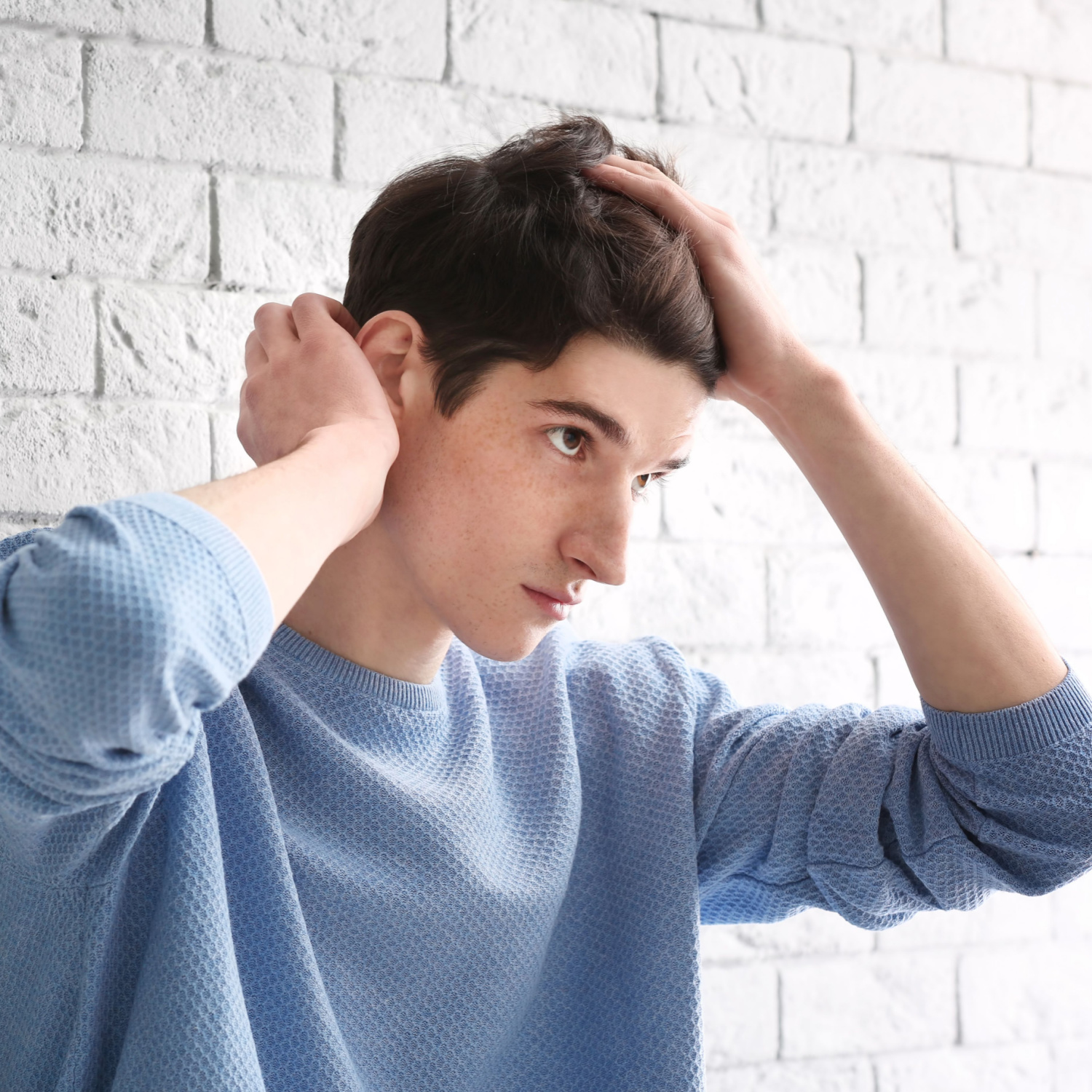What is Causing My Hair Loss?
Losing hair is quite normal—the average human sheds between 50 and 100 hairs daily.
A healthy scalp contains many hair follicles, some of which are in a “resting” phase and others in an “active” phase. The visible hairs on a person’s scalp are in the active phase, called the anagen phase. When a hair falls out, the follicle enters the resting period, called the telogen phase.
Hair loss becomes noticeable when more and more hair follicles are stuck in the resting phase. Eventually, entire patches of hair are in the telogen phase, leading to the traditional bald spot. Male and female patterned baldness most often occurs because of natural processes that keep hair follicles dormant.
Other medical conditions can lead to hair loss, including
- Alopecia areata
- Stress
- Telogen effluvium (TE)
- Traction alopecia
- Lichen planus
- Lichen planopilaris
- Dermatitis
- Alopecia totalis
- Melanoma
- Auto-immune conditions
The Best Hair Loss Solutions in Central Jersey
Treating Male Pattern Baldness With Medications
There are two FDA-approved medications for treating hair loss. Depending on the stage of your hair loss, we may recommend one of both of these medications.
Finasteride (Propecia or Proscar)
- Works best for mild to moderate hair loss
- Taken as a pill once a day
- Hair loss will resume when you stop using Finasteride
Minoxidil (Rogaine)
- Expands blood vessels in the scalp, helping nourish active hair follicles
- Topical medication applied directly to the scalp (or in a tablet form with a prescription)
- Hair loss will resume when you stop using Minoxidil
Hair Restoration Services
Apart from pharmacological treatments, we offer several procedural hair loss solutions in Central Jersey to help restore hairlines, bald spots, promote hair growth, and improve self esteem. These hair restoration solutions are more permanent than pharmaceutical solutions.
Follicular Unit Extraction (FUE)
Colloquially known as hair plugs or a “strip procedure,” the FUE procedure involves removing a strip of scalp from the back of the head, where hair follicles are more resistant to baldness. Then, the hair specialist cuts it into small grafts and transplants the grafts into bald regions of the scalp. This procedure takes approximately four to eight hours and is performed under local anesthesia.
Follicular Unit Transplantation (FUT)
An FUT is a hair restoration procedure that differs from FUEs because the hair specialist removes individual follicles and transplants them into the scalp. FUT hair transplants are commonly known as hair “implants” and usually produce more natural-looking results than FUEs—there’s less chance of scarring and mismatched hair textures. Expect the new hair to be visible 90 to 100 days after the hair restoration treatment.
Scalp Micropigmentation (SMP)
SMP is a unique hair loss treatment where the hair replacement specialist uses a microneedling tool to inject pigment underneath the scalp. Scalp micropigmentation works well to restore hairlines or can cover a completely bald head.
This procedure mimics the appearance of a freshly shaved head of hair—natural hairline included. Scalp micropigmentation procedures take between 20 minutes to an hour to complete.
Platelet-Rich Plasma (PRP)
PRP procedures work by injecting your body’s own platelets into your scalp using a microneedling tool. This process can improve blood flow to the scalp and help thicken and strengthen existing hair, leading to less shedding.
Facial Hair Transplants
If you are suffering from bald patches in your beard, mustache, or eyebrows, our hair transplant specialists can transplant healthy hair from the back of your head and graft it into the bald patches on your face to restore lost facial hair or fill in patches.
Female Hair Restoration
There are several procedural options available to women experiencing hair loss. Check out our female-specific solutions for hair loss.

